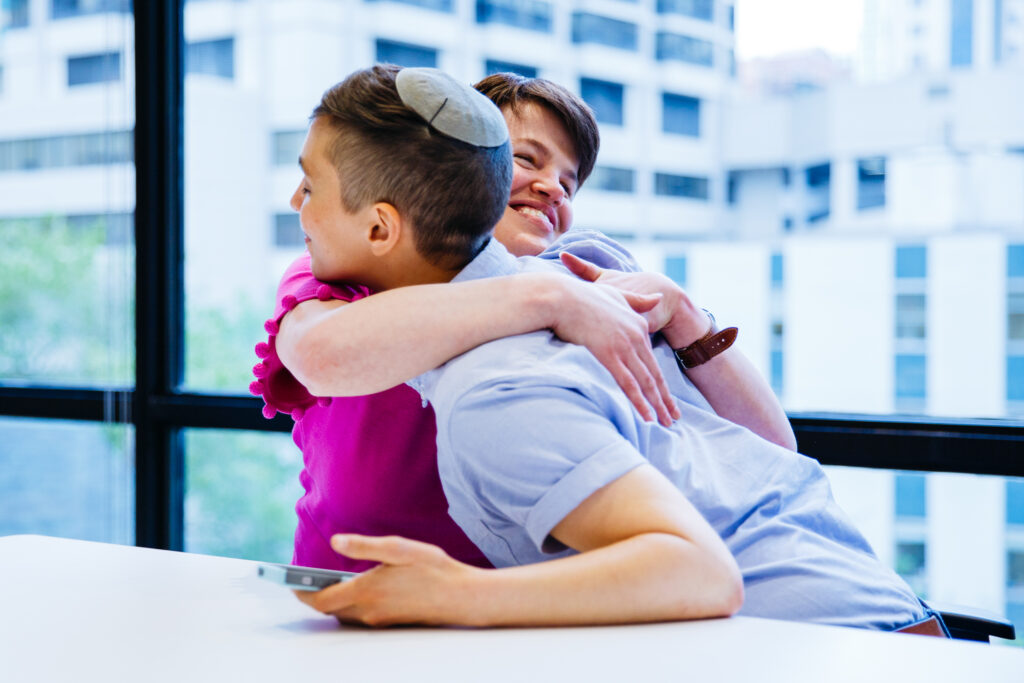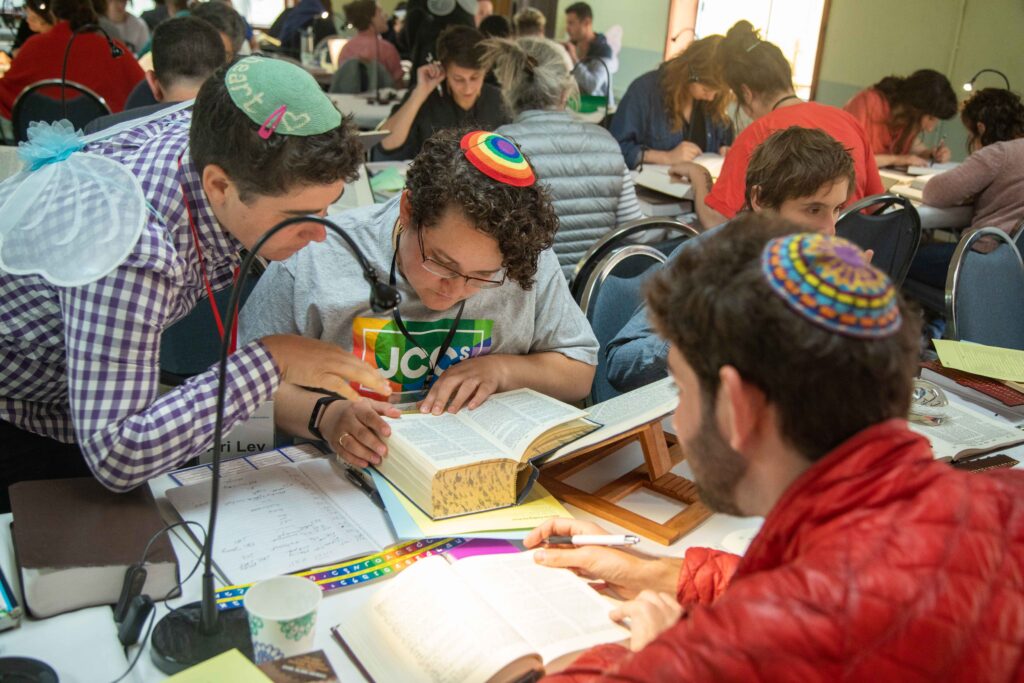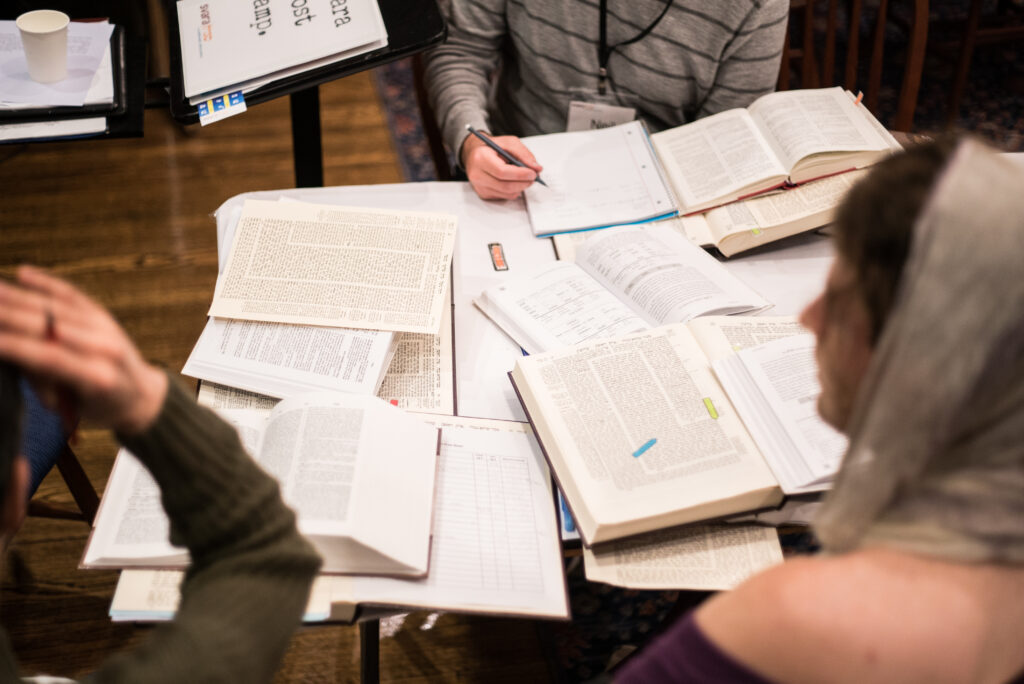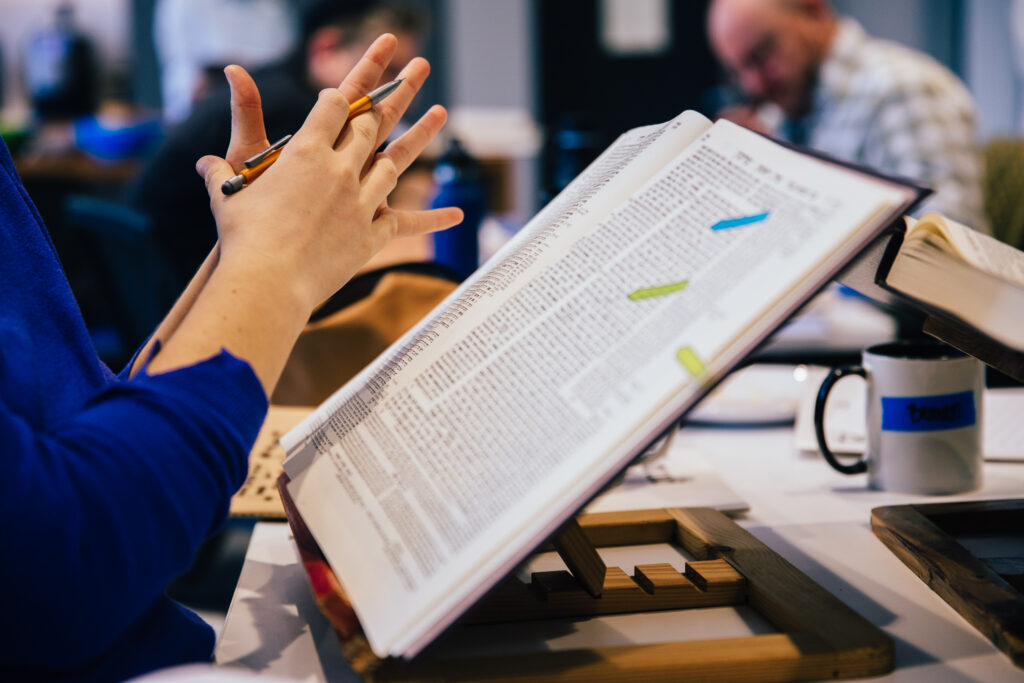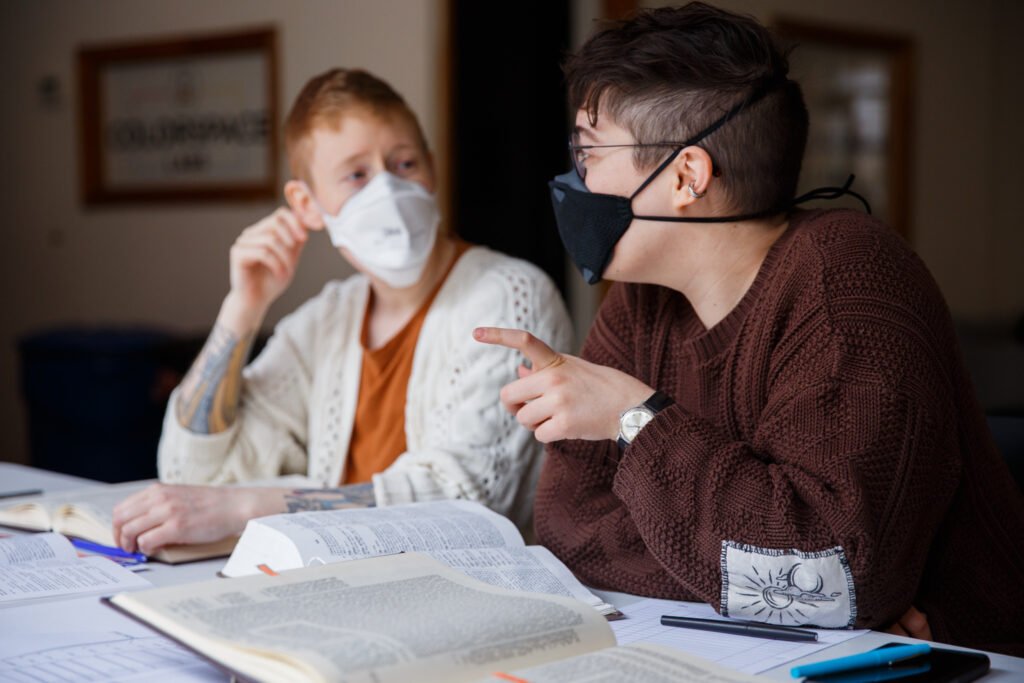I remember well the first time I tried to wrap tefillin. Someone kindly lent me their set after Shacharit (morning prayers) one day and I recall thinking to myself how mysterious and impossibly complicated they were. I knew the leather boxes (or batim) contained four passages of Torah—two from Devarim/Deuteronomy and two from Shmot/Exodus. I knew that by binding tefillin upon the body, the wearer was binding themself to Torah and to the Divine. I know many people experience a visceral discomfort with the intricacies of wrapping—how it feels upon the skin and how it looks to others; what it is like to wrap oneself in Jewish holy objects derived from animal skins; not to mention tefillin’s strong associations with masculinity and a particular kind of Jewish practice.
I have the unique experience of learning to wrap tefillin by other cis women. I recall vividly the frustration I felt as these women patiently (and with immense kindness) stood with me for as long as it took for me to put the tefillin on properly. Frustration rose and fell as I slowly got the hang of it. What once felt like an impossible chore—something I wanted badly but could never have—began to find its way into my muscles and bones, becoming a part of my embodied experience.
This week in the annual Torah reading cycle, we read Parashat Bo in which we encounter two of the four passages of Torah that are written on the scrolls that are lovingly placed into the batim of the tefillin. These passages are adjacent to each other in the 13th chapter of the book of Exodus. The first is Exodus 13:1-10, a remembrance of the going out of Mitzrayim. The second is Exodus 13:11-16, a continuation of this theme of freedom and remembrance. Twice in these passages, we are instructed to place these words and remembrances as a sign upon our arms and as a symbol upon our foreheads. The Exodus is so central in Jewish self-understanding that we recall it many times a day.
And yet, this physical manifestation of spiritual and communal memory is inaccessible still for so many. Their association with masculinity writ large and the traditional prohibition against non-men laying tefillin remains a strong one. Even in communities that encourage Jews of all genders to wrap, the act of doing so may be uncomfortable. It can feel hard to focus one’s mind and heart when becoming accustomed to the particular experience of wrapping tefillin. Not to mention that in many communities, if you’re a person who has traditionally been exempt or prohibited from wrapping, doing so carries a lot of risk. I do not hold that experience and recognize that I am therefore limited in how I am able to relate to others with divergent paths into or away from this mitzvah.
One of the things I love most about being a part of SVARA is our willingness to take tradition seriously while simultaneously inviting all into the practice of Talmud study, regardless of prior background. I extend this notion to all of Jewish practice. There is something so challenging and beautiful about tefillin being an embodied mitzvah. As a disabled person, mine is a body that never moves through public space unnoticed: a body that others project their fears onto, a body that many project their desire not to have anything to do with onto. Tefillin, for me, is both profoundly religiously meaningful and subversive. Every weekday morning when I wrap the tefillin and say the blessings, I am not only affirming my kinship and covenantal relationship with the Jewish people and the Divine, but I am also affirming that my body is a body worthy of being bound to Torah. In a world that affords us a very narrow space in which bodies are acceptable, mine can never fit the mold. This inability to be acceptable allows me a deep sense of freedom—a freedom to find my own path, my own way to honor and uplift my body and all bodies. Placing the tefillin upon my arm and forehead, feeling the contact between box and skin, I feel a cosmic connection that transcends temporal social ideas.
This past spring, I participated in a conference during which I had the incredible opportunity of participating in a tefillin-wrapping workshop that Laynie Soloman led. It was the first time many participants in that workshop had ever had the opportunity to lay tefillin. I excitedly brought my set along, passed them around, allowed many of the other folks to engage with them by touch. “Wow, these are so soft! You must wear them a lot!” It is hard to describe the elation I felt as each participant, with Laynie’s gentle guidance, wrapped tefillin. I don’t know what the somatic experience was for them. I know that for the first time in a good long while, I felt a sense that a gate had opened, and a new pathway revealed itself.
I am deeply aware that mine is a very unique experience. I not only learned to wrap tefillin from cis women, but I wear a set of tefillin scribed by a cis woman, which isn’t considered kosher in some circles because of the traditional prohibition against non-cis men becoming scribes. We live in a world now where Jews of all genders who wish to learn the exacting art of sofrut—scribing holy books and scrolls—can do so. I know many folks who are beginning this path, and it is amazing to me that we are here, now, in this place! May we continue to experience the flourishing of sofrut done by all who wish to take hold of this holy work regardless of gender!
I have often wondered what it would feel like to walk into a bet midrash wearing tefillin, as our rabbinic ancestors would have done. Tefillin were once worn all day as one worked, learned, and navigated one’s way through the world.
When you next sit down to learn, if the time for tefillin is upon you, you might consider this. Admittedly, as a Braille reader, I may not be able to do this as I’d like, but one never knows!
For those of you for whom tefillin feels inaccessible or just impossible to contemplate wearing, I hear you, and I witness you. I share my journey as simply a glimpse into my own experience and do so without prescription. It is my hope that however we connect—or don’t—that we find our way to that which enriches our lives, connects us to our tradition, and allows us to feel a sense of being a part of that which transcends ourselves. In times of trial and immense suffering, like what we’re living through, anchoring myself daily through this mitzvah has allowed me to find the ground beneath my ever-shaking feet. It becomes a firm foundation when it feels like the bottom is dropping out.
May we merit to learn much, to do much and to be in the world firmly grounded and ever opening to emergence. Tizku l’mitzvot!

